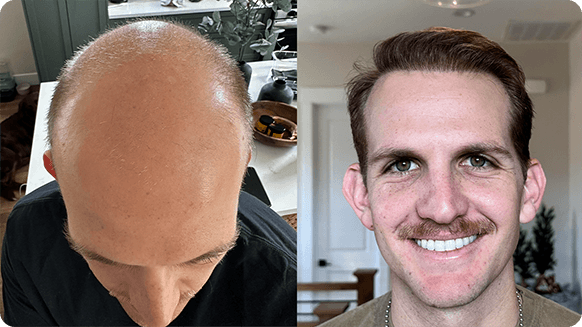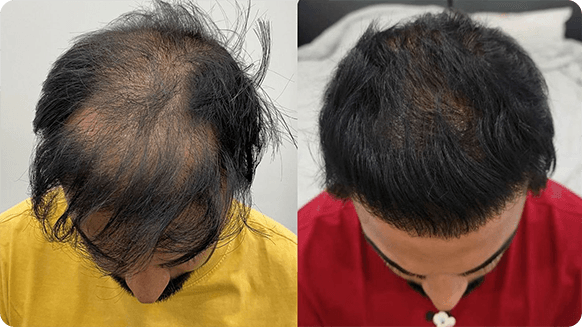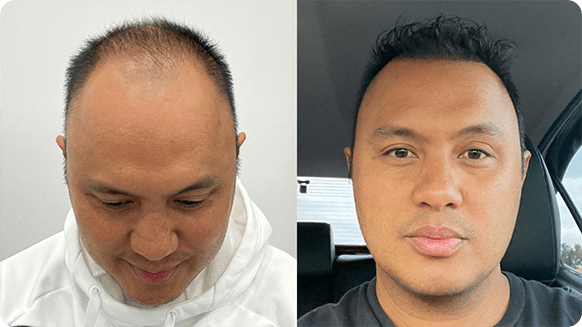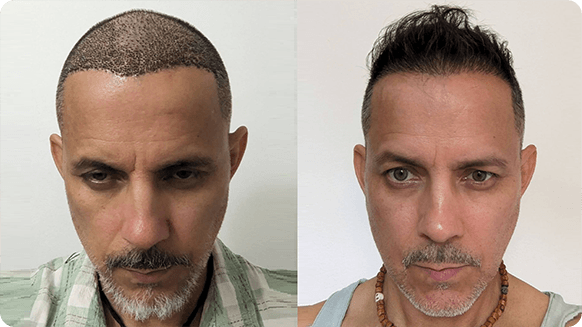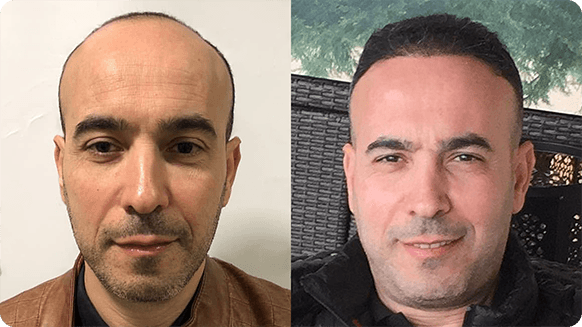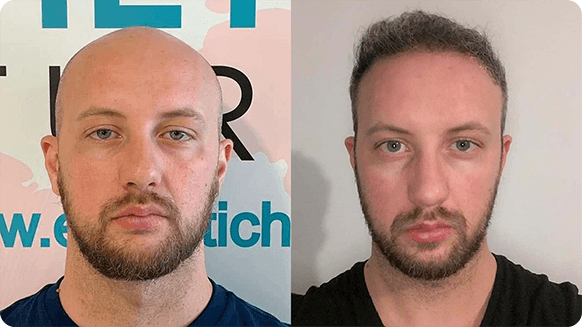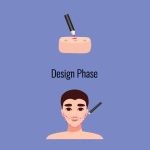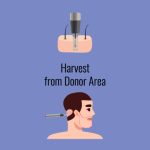F.A.Q.
A transplant doesn’t stop androgenetic alopecia from progressing. It moves hairs, but it doesn’t change your genetics. Hair outside the transplanted area can still thin. That’s why doctors usually recommend continuing treatment (finasteride, minoxidil) to preserve native hair. The transplant restores hair in bald areas but doesn’t fix the root cause of hair loss.
That depends on the method. FUT leaves a thin linear scar on the back of the head (usually hidden by surrounding hair). FUE leaves tiny dot scars that are barely visible. In either case, scarring is minimal with proper technique. Most patients can wear their hair short without visible signs. Following post-op care instructions helps scars heal optimally.
Not really. It’s done under local anesthesia, so you won’t feel anything during the procedure except a few numbing injections at the beginning. Afterward, you might feel mild discomfort, tightness, or soreness in the donor area—more so with FUT due to the stitches. This is easily managed with over-the-counter pain meds like ibuprofen. Many patients are surprised at how smooth the process is.
New hairs start growing around months 3–4. By month 6, most people already notice improvement. Full results take up to 12 months, sometimes 18—by then, the transplanted hair thickens and matures fully.
The first few weeks require specific care (gentle washing, antiseptics, etc.). After that, transplanted follicles are fully settled. Just maintain general scalp health—avoid smoking, manage stress, and keep your scalp clean. You don’t need special meds for the transplanted hair, but ongoing treatment can protect the rest of your hair.
Ideally, yes – especially if you have androgenetic alopecia. Transplants fix the visual issue, but medication helps retain non-transplanted hair. Not using them won’t harm the new grafts, but hair loss can progress in other areas, possibly requiring another procedure.
Depends on the size of the bald area and the desired density. A palm-sized spot may need ~2000–3000 grafts. Each receding temple might need ~1000 grafts. A large crown area may need 3000–5000. Your surgeon will estimate during the consultation.
Hair from another person (allogeneic transplant) won’t work — your immune system would reject it. Only your own hair (sometimes from the beard or body) can be used.
Yes, in cases of limited scalp supply. It’s called Body Hair Transplantation (BHT). Beard hair is most commonly used – it’s thick and blends well. Chest, arms, and legs can be used too, but the texture differs, and growth cycles vary. Beard hair might grow too coarse on the crown, so placement matters. A skilled surgeon will plan accordingly.
Yes, for some. Women make up about 10–15% of patients. If there’s localized thinning and good donor density, it can work—especially in cases like female pattern hair loss (e.g., widening part). But diffuse thinning all over the scalp isn’t a good fit. A full evaluation is essential, including labs to rule out hormone or iron deficiencies.
Technically, no. It can be done at 20 or 70. But men under 25 are usually advised to wait until their pattern of hair loss stabilizes. Otherwise, future hair loss might require additional surgeries.
The first 2–5 days may involve swelling or mild discomfort. Many people return to desk jobs within 2–3 days. Crusting in the graft area lasts ~10 days. Once the scabs fall off (around day 7–10), you’ll look more normal—just a little redness, which can be covered with hair. Most people look fully presentable after 2–3 weeks.
With modern techniques, survival rates are high—around 90–95%, assuming the procedure is done right and you follow aftercare guidelines.
It’ll behave like it would’ve on the back of your head. If your donor hair turns gray or thins with age, the transplanted hair will too—but most people retain strong hair in the donor zone even in old age.
At our clinic in Mexico, we specialize in high-volume transplants with natural density. For example, 4500 grafts cost $3800—just $0.84 per graft.
Look at reputation, reviews, and before/after photos. Choose a doctor with hair restoration credentials. During consultation, they should answer clearly, give honest expectations, and not pressure you with “limited-time offers.” Be wary of big promises that sound too good to be true.
